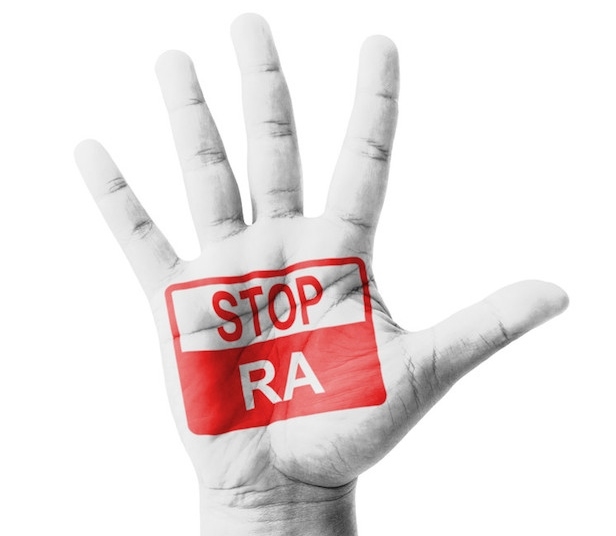When you have rheumatoid arthritis, exercising can seem counterintuitive. Just doing normal activities, like light chores around the house and garden, walking around a store, or playing with the dog can trigger joint pain ranging from aggravating to agonizing.
But exercise is actually incredibly good for rheumatoid arthritis. In fact, it’s just about the only way to maintain the range of motion in your joints when you have RA. It also strengthens the muscles that support and protect them and helps build and maintain strong, healthy bones. Finally, exercise is vital to your overall physical and mental health. It can help you lose excess weight—and keep it off—and contributes to heart and lung health, too.
According to the American College of Rheumatology, exercise also helps to prevent diseases like type 2 diabetes, cardiovascular disease, and osteoporosis. It can improve your sleep, reduce your pain, increase your energy levels, lower your risk of injury, and help you function better—all in spite of having RA.
But what kind of exercise works best with RA? Along with stretching, which further increases joint flexibility and range-of-motion, low-impact exercise is the best because it doesn’t pound, jar, or otherwise stress the joints. Walking at a brisk pace is a great low-impact exercise. So is swimming, water walking, bicycling, and strength training.
Those last words, “strength-training,” conjure up scary visions of barbells, dumb-bells, hand-weights, and weight machines. And you can use those, even with RA. But one of the best ways to strength-train with any type of arthritis is to use resistance bands, such as Ripcords, offered by Astone Fitness. You can increase the amount of resistance you’re working against and build your strength at your own pace—and you don’t have to go to a gym to use them. Resistance bands are convenient, easy to store, and last just about forever.
Made of latex and rubber, resistance bands require varying amounts of muscle strength to stretch. With different exercise positions, they can work just about every muscle in the body. You start out with bands that offer only light resistance and do minimum repetitions. Then, as your stamina increases and your muscles strengthen, you slowly increase the number of reps and, over time, the level of resistance.
Our muscles not only move our bodies, they support and protect our joints. And, when we lose muscle because of disuse, age, or both, fat often settles into its place. Using resistance bands for low-impact exercise burns fat for fuel and replaces it with lean muscle. And when done regularly, strength training with resistance bands can help reduce RA soreness, stiffness, and pain.
According to the Arthritis Foundation, a 2009 study in Great Britain showed that progressive resistance training may improve physical function in people whose RA is mildly disabling but well-controlled. None of the study participants experienced a flare caused by the exercise, which was high-intensity but not high impact. Instead, their endurance rose, they increased lean muscle, and the lost fat from the chest, abdomen, and back. The study involved weights rather than resistance bands, but the principle is the same.
Keep in mind that some mild, temporary pain is normal during and following any kind of exercise. But sharp pain that doesn’t go away and sore, swollen joints may indicate that you’ve overdone it. And never exercise a flared joint. Listen to your body and stay focused on smart, active health.
References:
- Physical Activity and Arthritis. (2011, December 28) Centers for Disease Control and Prevention. Retrieved on June 9, 2014 from http://www.cdc.gov/arthritis/pa_overview.htm
- How Weight Lifting Can Help Rheumatoid Arthritis. (n.d.) Arthritis Foundation. Retrieved on June 9, 2014 from http://www.arthritistoday.org/news/why-lift-weights.php
- Exercise and Arthritis. (2012, February) American College of Rheumatology. Retrieved on June 9, 2014 from http://www.rheumatology.org/practice/clinical/patients/diseases_and_conditions/exercise.asp
- Strength Training: Get Stronger, Leaner, and Healthier. (2013, April 24) Mayo Clinic. Retrieved on June 9, 2014 from http://www.mayoclinic.org/healthy-living/fitness/in-depth/strength-training/art-20046670?pg=1





 Payments powered by:
Payments powered by:

